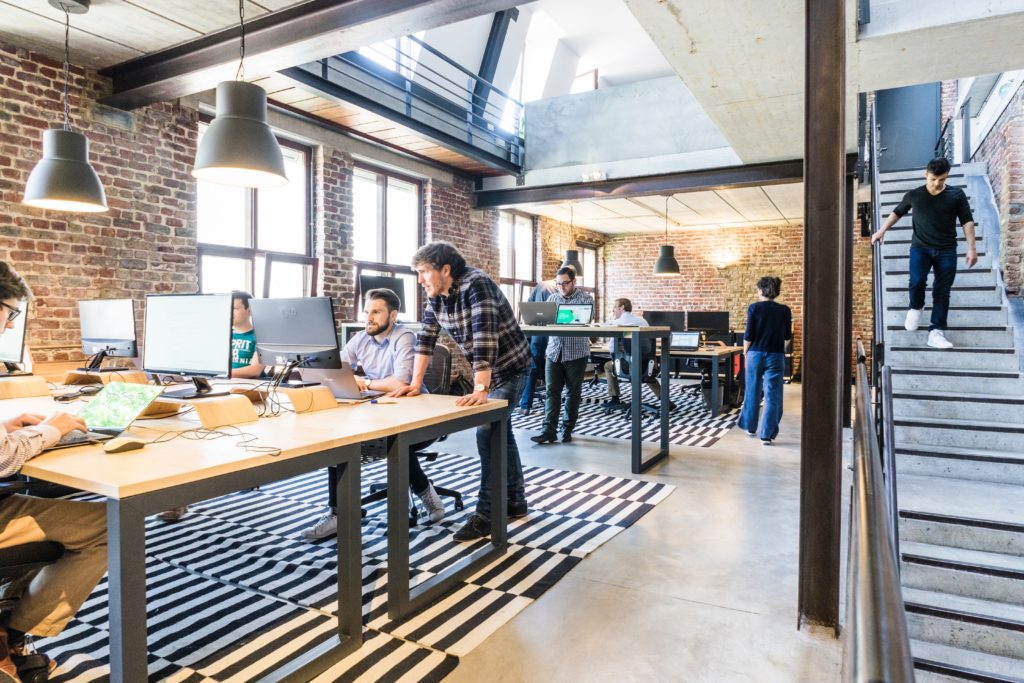The difference between VDI and DaaS
Businesses are creating cloud-first digital environments where applications are no longer required to be installed locally, giving staff a consistent experience from any device and any location. To do this, many companies are turning to Desktop as a Service (DaaS).

As we’ve mentioned a couple of times on the blog lately, the workplace is changing. It’s changed as technology has made work more mobile and flexible, which means changes for companies and their IT infrastructure.
Businesses are creating cloud-first digital environments where applications are no longer required to be installed locally, giving staff a consistent experience from any device and any location. To do this, many companies are turning to Desktop as a Service (DaaS).
Your initial reaction to this might well be “we tried deploying a virtual desktop infrastructure (VDI) in the past but we ran into various challenges”, something we’ve heard many times. While your past experiences with hosted desktops may have been a letdown, it’s important to know that DaaS and in-house deployments of VDI are completely different beasts.
What’s the difference between VDI and DaaS?
VDI and DaaS are both solutions for hosted desktops, the key difference between the two is that VDI is managed by the company itself, hosted and managed on-site or at a colocation facility, while DaaS is a managed infrastructure service, delivered by a provider and hosted in their data centres.
An IT professional’s first experiences of a virtual desktop will have likely been a Microsoft Terminal Server session, which has since renamed Remote Desktop Services (RDS) in Windows Server 2008 R2. As the requirement for a media-rich desktop experience grew, IT departments added Citrix to try to improve the handling of media over restricted bandwidth.
The issue here was that the demands of users outpaced the limitations of the technology within about 18-24 months. Users needed access to peripherals; the ability to customise their desktop; and needed a far wider range of applications than those that could be easily virtualised at the time.
The solution to this challenge was to deliver desktops built around a client operating system, giving each user a slice of resource from a Virtual Desktop Infrastructure.
In theory, VDI solved the problems, but the reality was quite different, unfortunately. Deploying VDI in-house became very time consuming and, ultimately, very expensive.
So why consider DaaS now? It could be said that DaaS is VDI where your infrastructure is someone else’s responsibility. A cloud provider will manage the infrastructure for you, giving your IT team SaaS-like access to the management interface. Doesn’t sound like such a big deal, does it? To understand why this is relevant to you, we need to look at what’s involved in a VDI deployment.
VDI requires a company to manage servers, storage, licences, endpoints and more, the cost of purchasing all of which is be pretty CAPEX heavy. The nature of end-users, all with different work patterns and needs brings immense complexity.
Engineers with little experience of end-user computing invariably struggle to plan for the resources needed to give users a constant and reliable service while meeting internal service level agreements (SLA).
Detailed user personas are required to understand what applications and resources are needed. This needs to account for individual users and not just departmental needs. An in-house deployment of VDI means any hardware failure or software issue is the responsibility of the IT team and an outage can result in a large number of employees having to stop work.
To minimise this risk, there needs to be additional infrastructure to provide business continuity in the event of a failure. This increases the investment in resources and may result in reduced agility of technical solutions for your company.
There will be times where an in-house deployment of VDI is the right choice, such as if you host highly sensitive data or require regular offline working. However, it’s far more likely that DaaS will achieve the business outcomes a company requires without CAPEX and VDI management overheads, resulting in a significant reduction in Cost of Ownership.
How does Desktop as a Service work?
DaaS has been available for several years but recent developments and improvements have overcome issues that have previously hindered its wide-scale adoption.
Cloudhelix’s DaaS infrastructure utilises VMWare Horizon, which means users are guaranteed a familiar Windows desktop experience with a performance level that outstrips that of local computing. One of our clients, TeacherActive–a Supply Teaching Agency specialising in the recruitment and placement of Supply Teachers across the UK–said that moving to the platform was “…like everybody has got a Core i7 sat on their desk.”, despite the fact that endpoints weren’t upgraded.
DaaS no longer has to exist as an isolated instance, it can be integrated with other IT assets, whether that is simply working with peripheral devices such as printers or more complex integrations with applications that have been difficult to virtualise but can now be delivered inside the desktop.
The ever-connected, always available nature of work demands a truly mobile workforce and companies need to be able to act and react promptly. Removing the burden of managing complex infrastructure and adopting a simple per-user DaaS model means your company can meet the organisational challenges of the 2020s without breaking the bank.
Your company will need to adapt to create a modern digital workplace and Desktop as Service has its place within your digital transformation journey. To find out more about DaaS and how Cloudhelix can help you on this journey, download our ebook today.

Question?
Our specialists have the answer

